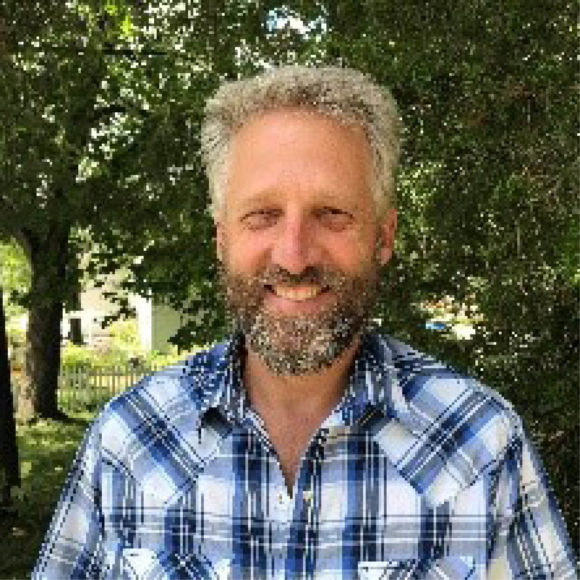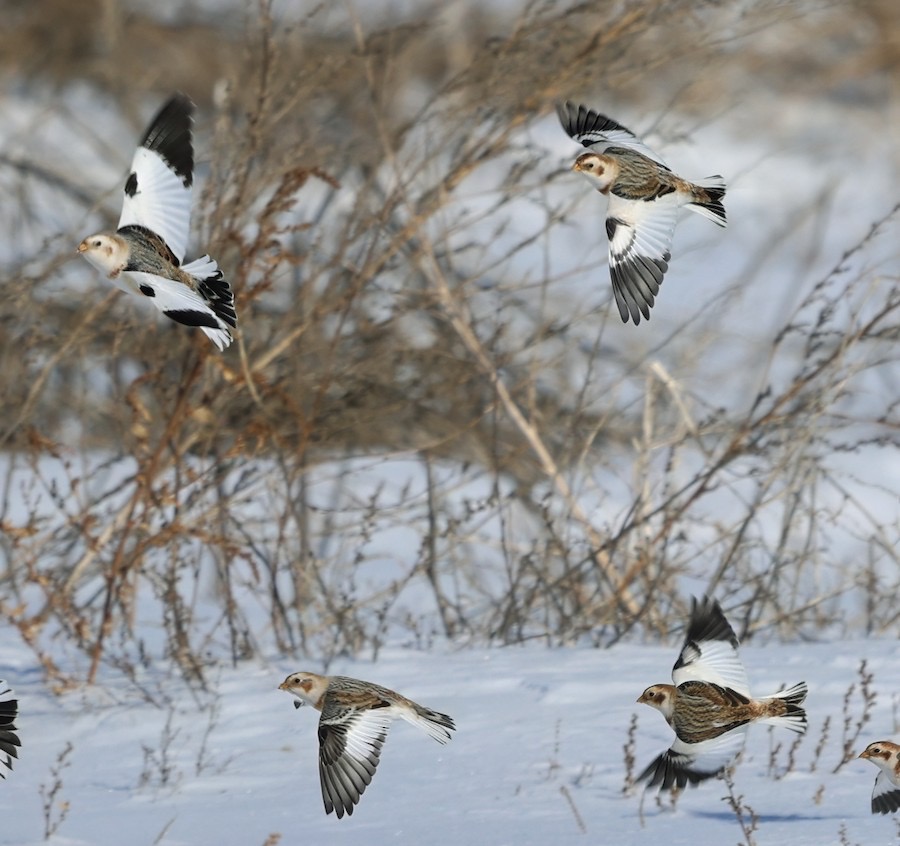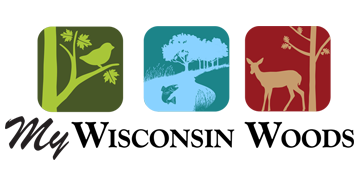
What to Expect from a Site Visit: Forester and Landowner Perspectives
Ever wonder what it is like to have DNR Forester visit your property for a site visit? Check out this article to learn about this process from both a forester and landowner perspective.
By Denise Thornton
Blake Rodgers and Marylee Kishel moved to Marathon County in February 2024, to live on the 40-acre wooded parcel they had recently purchased. They were surprised, when they received a letter from a local DNR Forester, Jeff Sorenson, offering to meet on their land and share professional planning and technical advice during a property walk-through. “We jumped on it and made arrangements to have him come out,” says Blake Rodgers.

“The first thing people tend to appreciate about DNR forestry assistance is that it’s free,” says Sorenson. “I’ve been a forester more than 35 years, and I’ve been in a lot of woods. We are blending our expertise with what the landowner wants out of their woods.”
“I was leery that he would be geared toward timber harvest, and that is not what we are about,” Rodgers remembers, but the first thing Sorenson said to him was, “What are your goals? Where do you see this property going?”
Rodgers thought process had been to create as little interference with what was already there, and let it grow naturally toward his 100-year plan to recreate an old growth stand while creating a diverse site that would attract the birds he has been watching and caring about most of his adult life. But he wasn’t really sure how to do that.
Sorenson finds that the most common reason landowners decide to meet with him is to learn whether or not their woods need to be thinned and how to go about that, including questions regarding income from timber sales. In addition, many landowners want to create better wildlife habitat. Other reasons include tree planting, stewardship plans, invasives control, timber stand improvement practices, insect and disease issues, and savanna or prairie planting. Sorenson noted that for many of these goals, cost sharing programs are available that DNR foresters can direct landowners to. There is also a free Forest Stewardship Plan available through the University of Wisconsin-Madison Division of Extension designed to help guide landowners step by step toward defining, refining, and implementing their goals.

DNR foresters understand the value of landowners setting up comprehensive forest plans for their property. This is important because about 57 percent of the state’s forest land is privately owned, and the combined practices of Wisconsin’s small woodland owners are creating the landscape now and for future generations.
A major current issue for many landowners is dealing with the effects of emerald ash borer (EAB), and what is going to happen when the ash trees die. It’s just starting to take off in the Wausau area. “We are recommending that landowners try to salvage their ash, whether through a commercial sale or firewood cutting,” says Sorenson. “With the almost complete loss of mature ash trees, some woods, especially ones with black ash that are common in wet areas, will really struggle to replace those trees. This is also complicated by deer pressure. Deer survive on woody browse in the wintertime, which means that sometimes there are no small trees established under the mature trees. Tree planting may be necessary to fill the areas where ash is being removed. Deciding what trees to plant is very site specific and depends on the landowner’s goals.”
“Managing a woodlot is not a one-time thing,” Sorenson says. “It is a continuum. Typically, there are multiple kinds of timber involved, and those trees grow at different rates, so it’s good to have a plan in place that says, thin the red pine this year, and in another seven years, thin the oak stand.” These plans are typically written by an expert with a forestry background, certified in plan writing. Cost share assistance is available for such plans. Learn more about certified plan writers.
“Cost share programs generally cover 50 percent of the cost,” says Sorenson. Your DNR forester can point out opportunities and can help get applications filled out and sent in for those programs.” He says management plans typically cover a 25-year period.
What does a site visit from a DNR Forester look like? “We walked for about an hour and a half. Jeff was always willing to explain,” says Rodgers. “As we walked through, he would tell me what was going on, and what I might do differently. I never felt rushed. I asked if we could take a side trail, and he agreed. It was great!”

Sorensen said a site assessment involves answering questions, but also asking some so that he can understand the specifics of the history of their ownership. “A lot of times the woods are inherited, and the owners know about past harvests and wind events,” he says. “But some folks are brand new to the property and don’t know where to begin. There is a lot to consider like what soils are present, and what the light is like. For example, the north side of a hill is vastly different in terms of humidity, light and water.”
“I learned early on as young forester from an older wildlife biologist with the Michigan DNR who told me, good forestry and wildlife management generally involves an axe,” says Sorenson. “I love trees, but sometimes you have to cut some down to remove diseased trees and help the better trees thrive and take over. It may mean creating different age classes and diversity and allowing light to come into areas that have been shaded out. It’s like weeding a garden when a forester takes out defective or diseased trees, so the remaining ones are more apt to grow and do better.”
In his follow-up letter to the Rodgers, Sorenson included:
The northern half of your woods is almost completely sugar maple. The good thing is there are multiple age classes present. To help diversify this area, you could do some underplanting of some conifers, oak or wildlife shrubs in some of the existing openings. Conifers to plant would be white pine (shade tolerant), white spruce (likes sun more) and hemlock (shade tolerant). Shrubs mostly like more sun, but planting hazelnut, dogwoods, or viburnums would provide soft mast for birds.
As we discussed, with the probable arrival of Emerald Ash Borer (EAB), managing your ash proactively will help realize some of the monetary value before these trees are likely killed by EAB. Ash is a fairly large component of this area. Harvesting all the ash before they die due to EAB would help realize some financial gain. Leaving a few would create some dead wood and snag opportunities for wildlife use. Creating a couple of small clearcuts where there is aspen during a frozen-ground harvest could create some nice habitat for songbirds and create some edge effect.

“In talking with Jeff, we learned that diversity is the main thing that is lacking in the north part of our land,” says Rodgers. “The maple seedlings have taken over. He suggested cutting some around the tallest ones so they have more resources and will grow faster. He also suggested enlarging some clearings and making new ones that can be planted with species that are not there now, to create a different micro ecosystem.”
For Rodgers, his love of birds is a real priority. “When I am out birding I see what Jeff is talking about,” Rodgers continues. “There is a spot back in the woods where we have yellow birches, and the goldfinches and pine siskins love those trees. Early in the morning I have seen over 100 birds around these four or five large birches. That’s probably one of the trees I will plant, and I’ve seen that the white spruce draws the crossbills and other conifer-loving birds.”
“It was wonderful to get someone out here to give us guidance on what we can do with our forest,” says Rodgers, recalling Sorenson’s site visit. “I believe the future depends on good management of our trees. There is no downside to a DNR Forester site visit, if you are interested in caring for your woods.”
